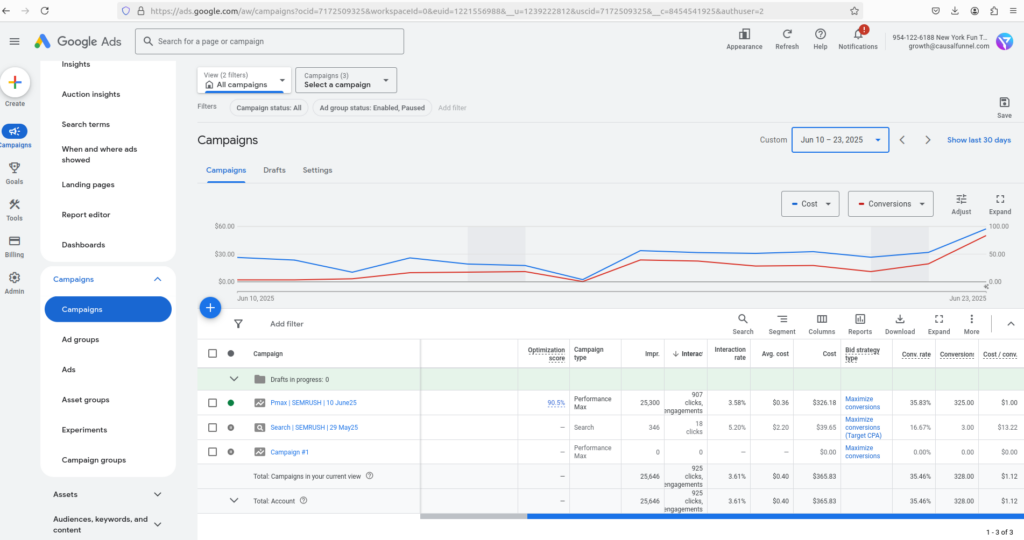In travel marketing, every dollar needs to count. Smart travel businesses track their inquiry costs carefully as this can help them spend money on the right channels and destinations.
A travel lead is someone who shows genuine interest in booking a trip with your business. They might fill out a trip inquiry form, request a travel quote, or download your destination guide. Not all website visitors are travel leads. Only those who take booking-intent actions count.
Cost Per Lead (CPL) for travel businesses is the amount you pay to get one qualified travel inquiry. It shows how much your travel marketing campaigns cost per potential traveler. This metric helps you understand which channels bring the best travel prospects.
CPL connects to your bigger travel marketing strategy. Cost per lead strategies help you set destination marketing budgets and measure campaign success. Lower CPL means more travel inquiries for the same marketing budget.

The travel cost per lead formula is straightforward, yet powerful:
Travel Cost Per Lead = Total Travel Marketing Costs ÷ Total Number of Travel Inquiries
You can use the above cost per lead formula only if you know how to calculate your travel marketing costs.
Your total travel marketing costs include several components:
Not every travel inquiry form submission is a quality travel lead. You need clear rules for what counts:
Let’s walk through a real travel agency scenario:
A renowned travel agency spent $3,000 on Google Ads targeting “luxury Italy tours” last month. They also paid $800 for professional destination photos and $500 for landing page optimization. Their travel advisor spent 15 hours managing the campaign ($750 in salary).
Total costs: $3,000 + $800 + $500 + $750 = $5,050
Qualified travel inquiries: 84 people submitted detailed trip request forms
CPL calculation: $5,050 ÷ 84 = $60.12 per travel lead
This means each qualified travel inquiry cost them $60.12.
Different travel businesses have different CPL ranges. Here are real examples across various travel sectors:
Campaign: Instagram ads targeting affluent travelers planning European river cruises
Spend: $4,500 over 30 days including creative development
Leads: 45 detailed luxury travel inquiries
CPL: $100 per travel lead
Luxury travel leads cost more but represent much higher booking values averaging $8,000-$15,000 per trip.
Campaign: Facebook and Google ads for Nepal trekking tours
Spend: $2,200 monthly budget including video content creation
Leads: 110 trekking inquiry forms completed
CPL: $20 per travel lead
Adventure travel attracts passionate travelers who research extensively before booking 2-week+ trips.
Campaign: LinkedIn ads targeting business travel managers
Spend: $1,800 including professional copywriting
Leads: 30 corporate travel program inquiries
CPL: $60 per travel lead
Corporate travel leads represent ongoing relationships worth $50,000+ annually per client.
Campaign: Pinterest ads plus wedding blog content marketing
Spend: $1,500 for ads and content creation
Leads: 25 wedding planning inquiries
CPL: $60 per travel lead
Wedding travel combines high emotion with significant spending, typically $15,000-$50,000 per event.
Campaign: Email marketing to travel clubs plus Facebook advertising
Spend: $900 for email platform and ad spend
Leads: 75 group travel inquiries
CPL: $12 per travel lead
Group travel leverages existing communities but requires longer lead nurturing for seasonal trips.
Campaign: Google Ads targeting travel protection searches
Spend: $2,400 monthly search advertising budget
Leads: 200 insurance quote requests
CPL: $12 per travel lead
Travel insurance has lower lead costs but requires high volume for profitability.
Campaign: YouTube ads featuring cruise ship tours and testimonials
Spend: $3,200 including video production and promotion
Leads: 80 cruise booking inquiries
CPL: $40 per travel lead
Cruise travel appeals to repeat travelers who book multiple trips annually.
Campaign: App store advertising plus influencer partnerships
Spend: $2,000 for app promotion and travel blogger collaborations
Leads: 150 premium app trial signups
CPL: $13.33 per travel lead
Travel tech focuses on user acquisition with subscription-based revenue models.
Campaign: National Geographic partnership plus conservation-focused content
Spend: $3,500 for partnership fees and content creation
Leads: 35 African safari inquiries
CPL: $100 per travel lead
Safari travel represents once-in-a-lifetime experiences with $10,000+ average trip values.
Campaign: Conde Nast Traveler advertising plus social media campaigns
Spend: $2,800 for magazine placement and social promotion
Leads: 120 direct booking inquiries
CPL: $23.33 per travel lead
Direct hotel bookings bypass online travel agency (OTA) commissions, making higher CPLs worthwhile for quality properties.
Travel CPL works alongside other important travel marketing metrics. Here’s how they compare:
Travel CPL measures inquiry cost, while travel CAC measures the full cost to get a confirmed booking.
Travel CPL comes first in your booking funnel. Travel CAC includes sales costs, proposal creation time, and longer nurturing cycles. If your travel CPL is $60 and 15% of inquiries become bookings, your travel CAC starts around $400.
Use travel CPL to optimize marketing channels. Use travel CAC to measure full business profitability.
CPC measures website traffic cost, while travel CPL measures qualified travel interest cost.
CPC shows what you pay for travel website visits. Travel CPL shows what you pay for actual trip inquiries. A $3 travel CPC might generate a $45 travel CPL if 7% of visitors submit inquiry forms.
Track both metrics together. Good CPC with poor travel CPL means ineffective landing pages or targeting.
Travel CPB measures confirmed reservation costs. This includes the full cost to generate actual paid bookings.
Travel CPL focuses on inquiry generation. Travel CPB tracks completed bookings with deposits or full payment. A travel inquiry might cost $60, but a confirmed booking might cost $500.
Travel CPB comes after travel CPL in most booking funnels. Use travel CPL for top-of-funnel optimization.
An Ads Optimizer Tool can help you identify and use more popular but untapped keywords for better ad visibility. A promising tool can offer far more features as well, including lower CPC, lower CPL, conversion tracking, higher conversions, and more. All of these combine to get you an increased return on ad spend (ROAS).
For instance, a popular travel agency in New York saw 10x increase in leads through usage of high-intent keywords, better bids, and conversion tracking.

Travel CPL benchmarks vary widely across travel business types and marketing channels. Here are current ranges:
Luxury Travel Agencies: $80-$200 per travel inquiry
Adventure Tour Operators: $15-$50 per travel inquiry
Corporate Travel Management: $50-$150 per travel inquiry
Cruise Specialists: $25-$70 per travel inquiry
Group Tour Companies: $10-$35 per travel inquiry
Destination Wedding Planners: $40-$120 per travel inquiry
Travel Insurance: $8-$25 per travel inquiry
Safari/Wildlife Tours: $75-$180 per travel inquiry
Boutique Hotels/Resorts: $20-$60 per travel inquiry
Travel Technology/Apps: $10-$30 per travel inquiry
Several travel-specific factors impact your actual costs:
Remember these are starting points. Your actual travel CPL depends on your specific niche, destinations, and target travelers.
Set clear rules for what counts as a qualified travel inquiry:
Don’t miss hidden travel marketing expenses:
Set up proper travel inquiry measurement:
Do the math and find travel-specific insights:
Review your travel CPL numbers monthly, accounting for seasonal booking patterns.
Better traveler targeting means higher conversion rates:

Better travel pages convert more visitors to inquiries:

Reach people already researching travel with your business:
Put more budget where it generates the best travel inquiries:
Focus on travel inquiry quality over quantity:
Educational travel content attracts qualified travelers organically:
Leverage others’ audiences to reduce direct advertising costs:
Problem: Counting all travel form submissions as equal inquiries
Solution: Create travel-specific scoring criteria including destination interest, budget range, and booking timeline
Problem: Focusing only on travel CPL without considering booking value potential
Solution: Balance travel CPL with average booking value and profit margins per destination
Problem: Different measurement methods during peak and off-season create inaccurate data
Solution: Use consistent tracking and attribution methods year-round for accurate comparisons
Problem: Average travel CPL hides high-performing destinations and low-performing trip types
Solution: Track travel CPL separately for each destination, trip type, and traveler segment
Problem: Low travel CPL means nothing if inquiries don’t turn into confirmed bookings
Solution: Track full travel funnel metrics including inquiry-to-booking conversion rates
Problem: Comparing peak season CPL to off-season without context
Solution: Track seasonal patterns and adjust expectations based on travel booking cycles
Problem: Measuring travel CPL over periods shorter than typical booking cycles
Solution: Allow for 30-90 day booking windows when calculating travel CPL effectiveness
The right cost per lead strategies can help your travel business boom, eventually at lower costs.
Cost Per Lead is a crucial metric for travel marketing success. It helps you allocate destination marketing budgets and measure channel performance effectively.
Start tracking your travel CPL today. Better measurement leads to more efficient travel marketing and higher booking rates.
Empowering businesses to optimize their conversion funnels with AI-driven insights and automation. Turn traffic into sales with our advanced attribution platform.



